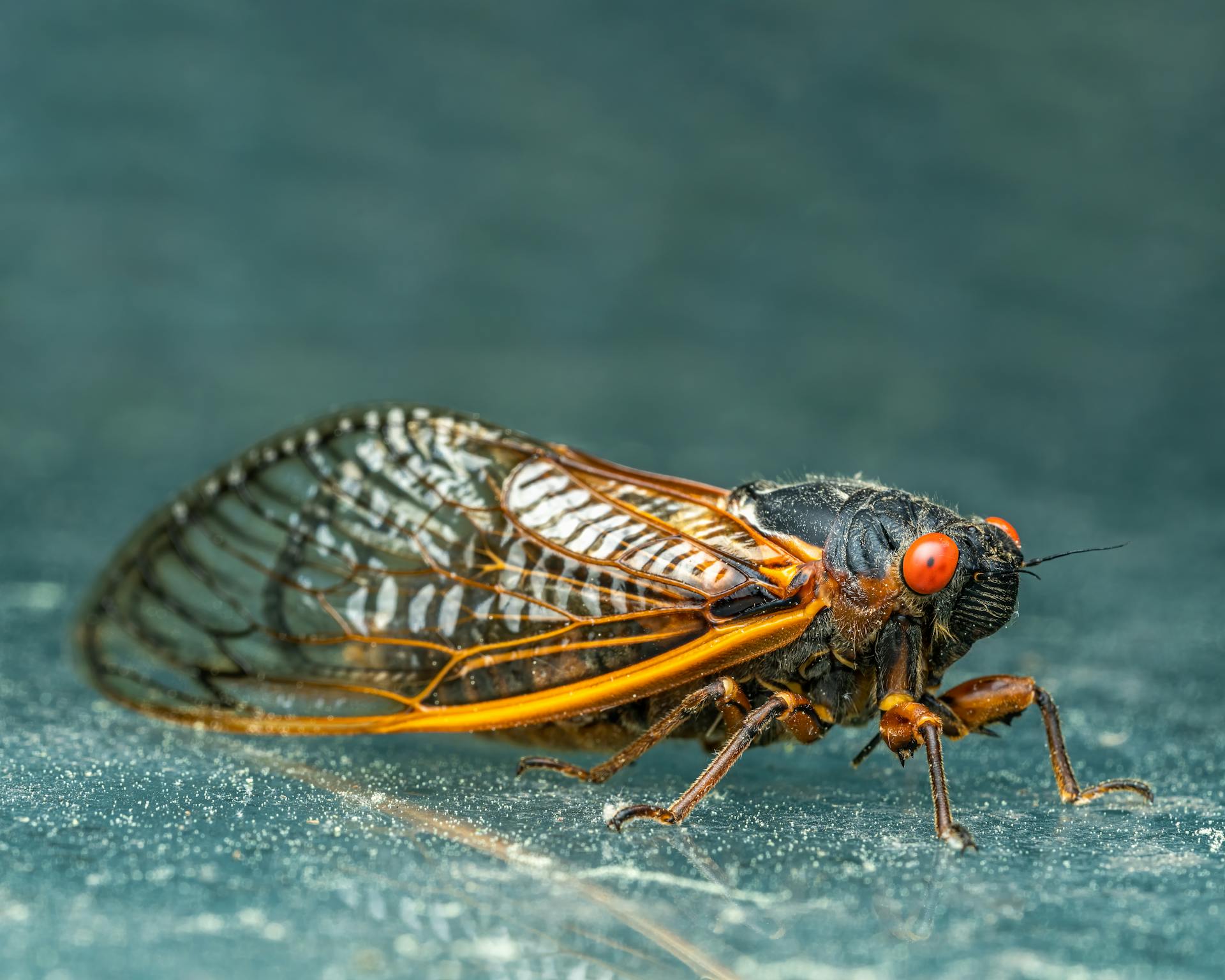Cicadas are among the loudest bugs around, grabbing everyone’s attention not only with their sheer mass but also their piercing noises. This season, something special is set to happen in Illinois as two big cicada groups Brood XIII and Brood XIX are about to show up at the same time. This occasional overlap will likely cause a buzz of auditory and natural activities.
The Emergence’s Scale
Cicadas make a regular comeback in Illinois, adding their chorus to the state’s summertime vibe. But, come 2024? It’s going to be something else because two important groups will rise together. With this rare combo, we’re looking at an even bigger racket and more cicadas filling spots like Chicago and central parts of the state than usual.
Projected Figures
The experts think that it’s possible to see up to 1.5 million cicadas for every acre. Dr. Gene Kritsky, who knows a lot about bugs, says these numbers are normal for Brood XIII in northern Illinois. Cicada specialist Catherine Dana from the Illinois Natural History Survey talks about how the number of cicadas popping up can change a lot you might see anywhere from 50,000 to that whopping 1.5 million per acre due to different local environments.
Environmental Impact and Cicada Habitats
Cicadas usually come out in forested spots near trees, but Dr. Kritsky mentions that because of more buildings and farms around these days, there aren’t many perfect places are left for them. This changes where they live and how many come out at once.
Historical Emergence Data
Past records, like from 1956, show that some places close to Chicago had up to 311 holes per square yard made by emerging cicadas showing just how big these bug events can get. Knowing what happened in the past helps us guess how big this year’s event might be.
The Auditory Experience
Cicadas are known for making a lot of noise it can be as loud as lawnmowers or jets! This year, two groups of them are coming out at the same time, so it’s expected to be really loud. According to the CDC, cicada sounds can hit 90100 decibels. That’s more than the safe limit of 85 decibels they recommend.
Noise Comparison
If you’re in the middle of a forest full of cicadas, it might feel like you’re at a rock concert because it’s that noisy, says Dr. Kritsky. This deafening sound is one of the things that make cicada emergences memorable.
The Cicada Lifecycle
Cicadas don’t live very long as adults just four to six weeks. In that short time, they mate and lay their eggs before passing away. You can tell their time is up when lots of bugs are dead.
Cleanup Challenges
When these cicadas show up in droves, they leave behind their dead bodies and shed skins. This mess needs to be cleared out fast to avoid stinky smells and junk piling up around houses and buildings.
Geographic Distribution and Timing
Brood XIII, you’ll mostly find this group hanging out in parts of northern Illinois, Indiana, Wisconsin, and Ohio.
Brood XIX, also called the Great Southern Brood, they’re all over the place from Missouri to North Carolina.
If you’re in central Illinois, say around Springfield, you might see both broods at once. That could mean some interesting mix-ups in how they interact or hook up with each other.
Cicada Facts and Misconceptions
Contrary to what some folks think, cicadas won’t harm people, pets or most plants in the garden.
Cicadas don’t harm people they neither bite nor sting, and pesticides don’t really stop them. Instead, they have an important role in our ecosystem. They offer benefits that last even after they’re gone.
Ecological Benefits
Food Source, for many birds, mammals, and reptiles, cicadas are a key part of their diet.
Soil Aeration, when cicadas come out of the earth, it helps the soil breathe better which lets water move through easier and makes the soil healthier.
Nutrient Recycling, when cicadas break down in the soil after they die, they give back good stuff that makes the ground more fertile.
Anticipated Ecological Impacts
The huge numbers of cicadas might shake things up in the local ecosystems for a bit. Scott Sakaluk, who’s a biologist at Illinois State University, thinks this could be great news for birds since predators such as raccoons might focus on the plentiful cicadas instead of bird eggs or babies.
Conclusion, Embracing the Cicada Phenomenon
The 2024 swarms of cicadas set to arrive in Illinois are more than just an auditory spectacle. It’s a significant ecological event. As residents prepare for the noise, they can also appreciate the broader environmental contributions of these insects. With dual broods set to emerge, Illinois is on the cusp of experiencing one of nature’s most impressive displays, filled with the sounds and sights of cicada life.
It’s not only a big show for our ears but also an important happening in nature. Folks getting ready for all that racket should remember that these bugs do a lot for our environment too. Two bunches of them are about to pop up, and Illinois is looking at an amazing nature show packed with cicada noises and activities.











+ There are no comments
Add yours